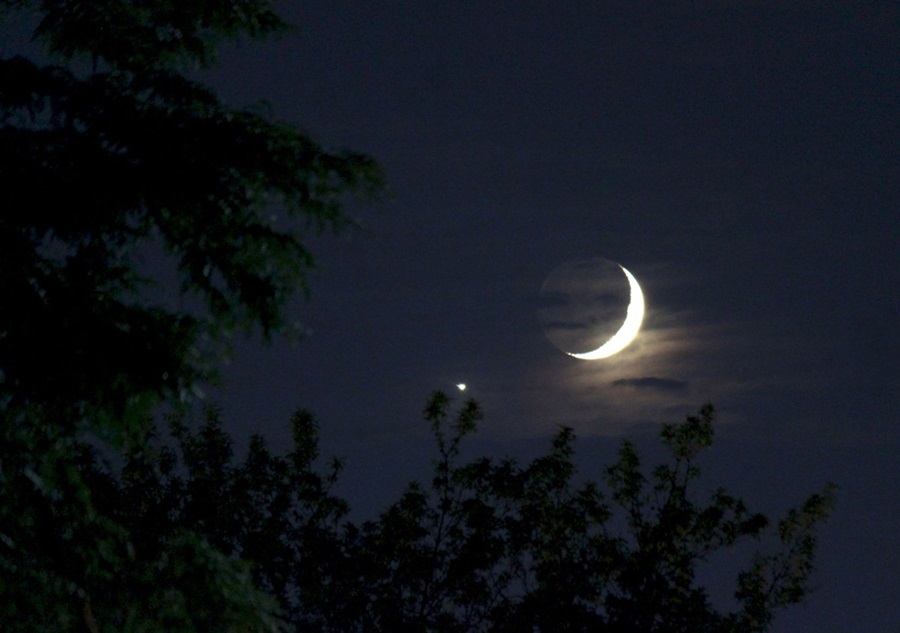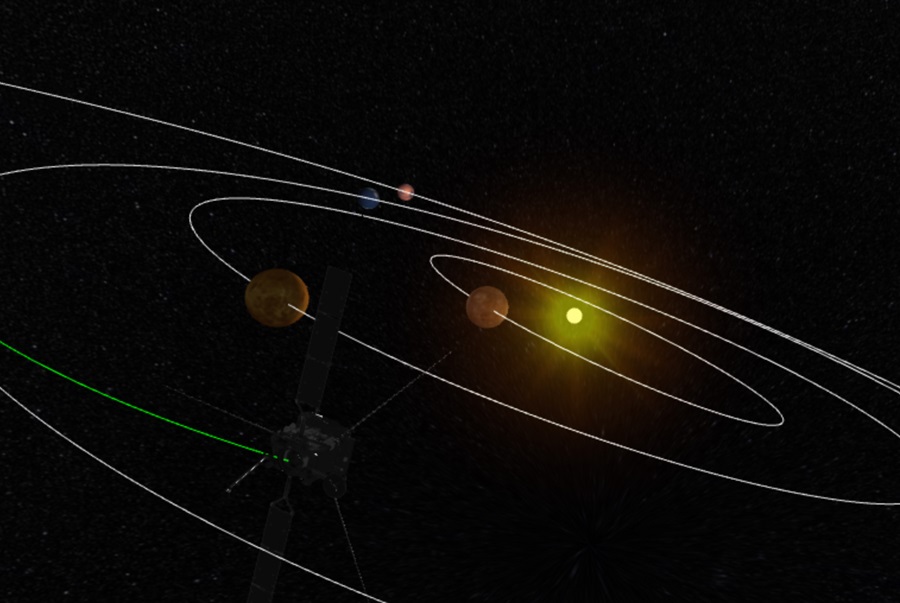Celestial events often care little for our convenience. Meteor showers are best seen in the hour or two before dawn. (Did you catch the Geminids back in December at 4 a.m.? I didn’t.) Events like solar eclipses occur on dates certain and for brief moments, without regard for our work, school, or child-care schedules.
But there are rare times, like this January, when beautiful sights grace the sky every evening. Put on your warm gear and step outside about an hour after sunset and you’ll see them. Celestial scheduling doesn’t get any better than this.
Face east as twilight falls and look for a distinctly red star very low near the horizon. That’s Mars, the red planet, whose color comes from the iron oxide (rust) of the rocks and dust that cover its surface. It’s about half Earth’s size. This month, Mars makes its closest approach to us since 2022, closing the gap to just 60 million miles.

If your yard doesn’t have a clear sightline low enough in the east to reveal Mars, don’t worry, there are other things to see. Look higher in the east and you’ll see a very bright golden-white star. That’s Jupiter. Note that both planets rise as the night goes on, then set in the west, so their location after twilight depends on how late you’re outside looking.
Jupiter is the largest planet in our solar system. Contrast its diameter of 87,000 miles with Earth’s 7,900; Jupiter is so big that all of the other planets could fit inside it with room to spare. It’s far away at 480 million miles, but its size and its reflective atmosphere make it very bright in our sky.
The waxing Moon was playing tag with both Mars and Jupiter through the first half of January. Now, in the second half of the month, you’ll find some planetary action in the southwest with Saturn and Venus.
Again at the incredibly convenient time of one hour after sunset, venture into the cold and look high in the southwest (no low exposure necessary). You can’t miss Venus. It’s the astonishingly bright blue-white star. Close by is much dimmer Saturn, a reddish-gold star. Saturn and Venus wander closer and closer to each other until the 17th, when they reach conjunction (their closest). It will be a dramatic visual pairing of stars of two different colors.

Venus and Saturn continue their dance to the very end of January, when there’s a date-sensitive event worth making an effort to see. On Jan. 31, a lovely crescent Moon appears in the west-southwest after sunset. Just above it you’ll see red-gold Saturn and, higher up, brilliant Venus. Take a moment to consider their varying distances, sizes, and reflectiveness, all of which interact to yield their different colors and apparent sizes in our sky.
The Moon is about a quarter of the Earth’s size, 220,000 miles away, and without any atmosphere. Venus is almost exactly our size, with a diameter of 7,521 miles. It’s completely covered in thick clouds of sulfuric acid that reflect lots of sunlight and is about 73 million miles away in January. Then there’s giant Saturn. Among the planets it’s second only to Jupiter in size at 75,000 miles diameter; 750 Earths could fit inside it. Its upper atmosphere is composed of hydrogen with a little helium, and, like Venus and Jupiter, it reflects much received sunlight. Why isn’t it as bright as Jupiter? Because it’s very far away — about twice Jupiter’s distance at 880 million miles.
In case you’re busy on the 31st, or it’s a cloudy night, January extends its scheduling grace for another 24 hours. These three objects will still group themselves nicely on Feb. 1, except that the slim Moon will be next to Venus.
Earth orbits the Sun. The Moon orbits Earth. Venus and Mercury orbit the Sun inside our own orbit, while the other planets orbit farther out from us. From our point of view, these differing motions create complex patterns in the night sky. Planets move in one direction for weeks or months at a time, stop, then reverse themselves. They disappear, then reappear. They are brighter at some times of year, or in some years, and dimmer at others. And all the while, our Moon repeats its own complete cycle of phases and shifting rise and set times.
Sometimes all of this movement comes into a brief kind of synchronization. That’s when we get conjunctions, easy viewing times, and several planets visible on the same night. Take advantage of it while you can. You’ll remember these special nights during celestial deserts ahead. Clear skies!



